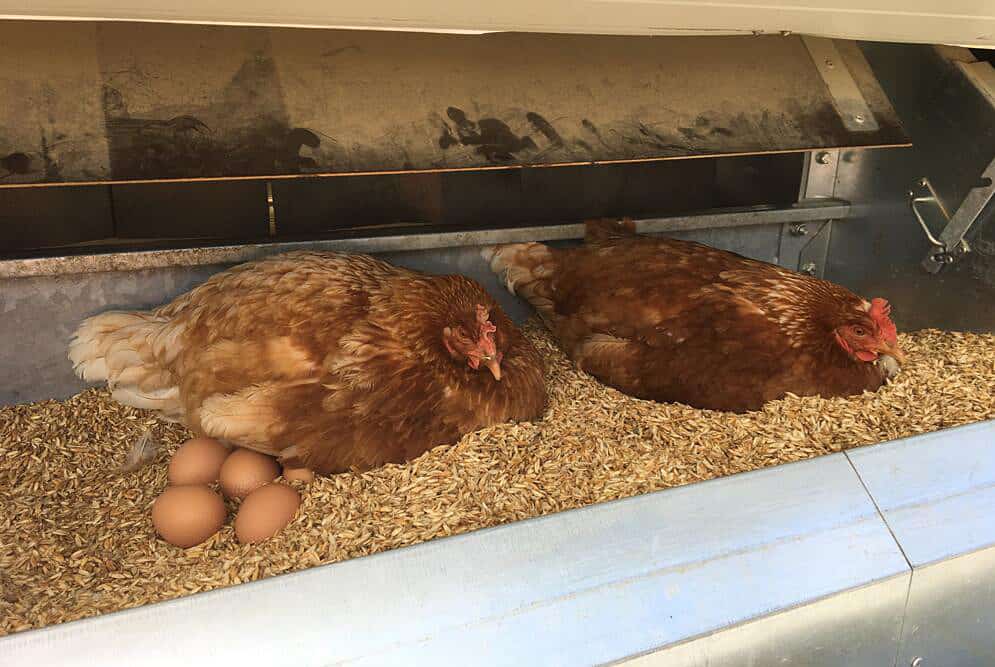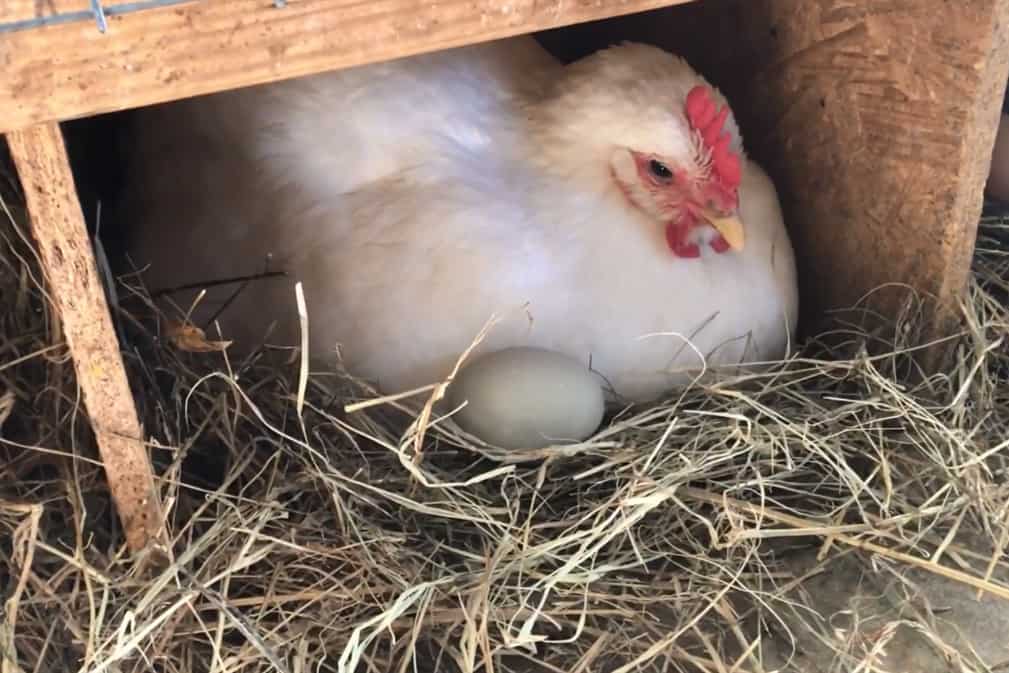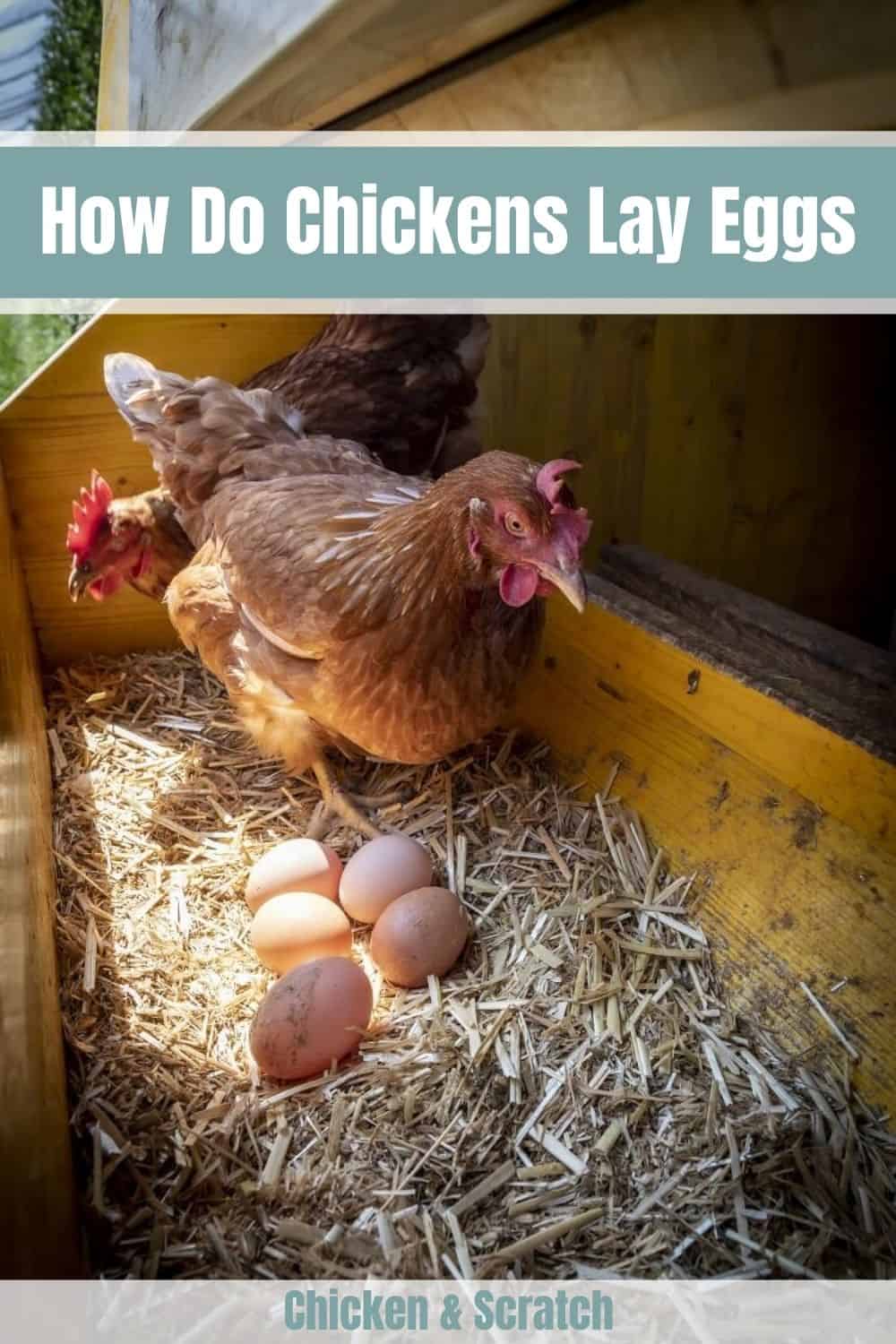The age-old question is: Which came first, the chicken or the egg? But, have you ever thought about how do chickens lay eggs? Eggs have always been part of our daily breakfast. It would be exciting to know more about the process before we savor it.
This article will cover
- How are chicken eggs formed
- Incubation Process
- How many eggs does one hen produce?
- Do chickens need roosters to lay eggs?
- Fertilized Eggs vs. Non-Fertilized Eggs
- What is the candling process?
- 5 Things you need to prepare to ensure chickens lay eggs
How are chicken eggs formed

Whether it is fertilized or not, both types of eggs still undergo a similar formation process. To fully understand the origin of eggs and how they are formed, we need to learn some basic chicken anatomy.
Unlike mammals, which have two functioning ovaries, chickens and most birds have only one functional ovary and oviduct. Even though chickens only have one working left oviduct and ovaries, they are still capable of reproducing.
Hormones control the process of forming an egg that starts in the ovary of a chicken and partially in its oviduct, which is the hen’s reproductive system. The reproduction process takes from 24 up to 28 hours for an egg to develop.
Ovary
The journey begins in the ovary of a hen that contains thousands of tiny ova or follicles, which is believed to become the egg yolk after some time. Although, it depends on the age and breed of the chicken. These hens produce more eggs during their younger years, laying almost every other day. However, the productivity and quality of an egg then decrease as the chicken ages.
Infundibulum
The tiny ova are released from the ovary then transferred to the infundibulum by passing through the oviduct. When a hen mates with a rooster, fertilization will occur in the infundibulum prior to the formation of other egg components.
Fine filaments appear, which will help the yolk anchor in the middle of an egg-white, which happens while the ovum is still in the infundibulum. It takes less than half an hour before the eggs transfer to the magnum part of the oviduct.
Magnum
The egg will receive the coating of the albumen or known to be the egg white. The white albumen coating will become thicker, hence, considered to be semi-developed in just about three hours of being in the magnum.
Isthmus
The next station of the egg developing process is the isthmus, where both the inner and external shell membranes develop. It continues to develop until the membrane of the shell is formed in more or less than two hours.
Uterus
The egg will then leave the isthmus and pass inside the uterus, where it will stay for at least 18 up to 24 hours, waiting for the outer shell to become stiff and well-developed, thus including the shell color.
The eggshell consists of calcium carbonate sourced from the hen’s dietary intake and stored body calcium. Moreover, you must ensure your chicken has a proper diet to prevent it from laying soft eggs.
Vagina
The vagina is the last stop of the egg’s journey until it finally comes out in this world. Although it is not involved in egg formation, it deposits an oily protective shell covering known as a cuticle. This layer of coating assists in the egg-laying process by giving the egg protection from any bacteria as it has to exit through the cloaca.
Incubation Process
Fertilized eggs have to be incubated before they hatch, which usually takes up to 21 days. There are two ways how to incubate the fertilized eggs.
First is the typical incubation process, which involves the hens keeping their fertilized eggs just by sitting on top of it. But the natural hatching process may not go as planned because some hens do not want to brood their eggs until they hatch. This usually happens regardless of the breed. However, the smaller ones, commonly known as bantams, are famous breeds for being good brooders.
Therefore, the other way to incubate the eggs before they hatch is by providing them with artificial light with a high amount of wattage that is recommended. This will suffice the warmth it needs to hatch.
How many eggs does one hen produce?

The quality and the number of eggs a hen can produce varies. May it be according to breed or healthy a laying chicken is. There are breeds that lay more eggs than the others. Most backyard chicken hens can produce an average of 250 eggs due to the 24-hour interval of bearing an egg.
Do chickens need roosters to lay eggs?
Chicken hens do not need their counterpart, roosters, to produce eggs. Even without mating to a rooster, hens can still lay an egg daily at a 24 hours interval. This is beneficial, especially for chicken owners who have a poultry business selling eggs.
However, if you intend to grow your flock of chickens, you will need the help of a rooster to perform its responsibilities. The rooster is more than happy to carry out its duty. Its role is to help in multiplying the chicken population.
Fertilized Eggs vs. Non-Fertilized Eggs
Fertilized and non-fertilized eggs don’t differ significantly in flavor or nutrient content. Hence, there are no health concerns involved whether you consume a fertilized egg or not. But these two differ when it comes to how it is considered to be a fertilized one or not.
To easily understand the difference, take a quick look at the comparison table guide below:
| Fertilized Egg | Non-Fertilized Egg | |
|
Cause |
A hen and a rooster had done the mating process | A rooster was not involved |
|
Maturity |
Maturity of the embryo only happens if it will undergo 21 days of incubation | Does not apply especially when hens lay eggs on a daily basis |
Click the video to learn how to identify if the egg is fertilized or not:
What is the candling process?
The candling process determines if freshly laid eggs are fertilized. However, doing so is already a complex task. A person who must do it is trained and knowledgeable to know the difference between the two.
Blood spots are seen, and some signs of the early stages of the embryo are visible when an egg is held up high adjacent to the bright beam of light. With this, you may somehow clearly see and examine what is inside, particularly its opacity and shape.
To learn how to make
5 Things you need to prepare to ensure chickens lay eggs
1. Chicken nesting boxes
Just as humans and mammals need a comfortable birthing area, chickens require cozy and tidy nesting boxes. It is advisable to create one that will give you open easy access to collect eggs once they are done laying eggs.
It does not necessarily have to be one nesting box per hen; your bearing chickens can use it alternately depending on which one is due to lay.
2. Provide lighting in the chicken coop
Whether artificial or natural, light is crucial in indicating when the chicken can start laying eggs apart from its age. The more time they are exposed to light, the shorter time you wait until they can begin producing eggs.
Frequently, hens may be able to lay eggs once they reach their 18-week mark. However, if this is the same time as the cold season when there is not much daylight, it would be best to provide their light source in their coop as they need to be exposed to it for at least 14-hours a day.

3. Nutritious diet
The health of the chicken also has a crucial role for chickens that are laying eggs. It is necessary to provide them with a healthy diet, especially when you want them to produce eggs at a reasonable rate.
Healthy natural food such as zucchini, cauliflower, and other greens is essential, but you can also feed them chicken layer pellets. These have nutrients such as calcium that are essential to the process of laying eggs. Calcium can also help prevent chickens from laying soft or shell-less eggs.
4. Make sure to prevent parasites
Chickens cannot start laying eggs if they do not feel well. Various parasites may infect your flock resulting in them not laying eggs. Ensure that you provide your chicken hens with regular deworming, may it be organic or not.
Both internal and external parasites may affect your chicken’s health, so make sure that everything that surrounds them is nothing but clean.
5. Secured chicken coop
Stress, often caused by predators, can prevent chickens from laying eggs. With this, make sure that you protect them from any threats of a predator. A stressed and scared chicken will result in little to no egg production.
Summary
The overall time of an egg formation process is roughly about 25 to 28 hours. But, chickens also need a little time to rest, so the next ovulation occurs after about two hours. Afterward, the succeeding egg-cycle process will start again. And now we know how chickens lay eggs.


Joseph Hudson has been raising chickens for over 15 years. In 2018, he completed the Agriculture & Natural Resources program at Mt. San Antonio College. He currently raises over 1400 chickens on his 7.5-hectare farm. He keeps sharing his experience on raising healthy and happy chickens on Chicken Scratch The Foundry.







